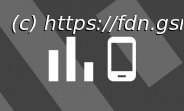OpenAI finally announced a privacy tool for products like ChatGPT to help creators prevent their copyright content from training AI models.
OpenAI has been in hot water regarding data privacy ever since ChatGPT was first released to the public. The company used a lot of data from the public internet to train the large language model powering ChatGPT and other AI products. But that seems to have included copyrighted content. Some creators went ahead and sued OpenAI, and several governments have opened investigations.
Basic privacy protections, like opting out of training the AI with your data, were lacking for regular users, too. It took pressure from regulators for OpenAI to add privacy settings that let you remove your content so that it won’t be used to train ChatGPT.
Going forward, OpenAI plans to deploy a new tool called Media Manager that will let creators opt out of training ChatGPT and other models that power OpenAI products. The feature might have been introduced much later than some people expected, but it’s still a useful privacy upgrade.
OpenAI published a blog post on Tuesday detailing the new privacy tool, and explaining how it trains ChatGPT and other AI products. Media Manager will let creators identify their content to tell OpenAI they want it excluded from machine learning research and training.
Now, the bad news: the tool isn’t available yet. It will be ready by 2025, and OpenAI says it plans to introduce additional choices and features as it continues developing it. The company also hopes it will create a new industry standard.
OpenAI did not explain in great detail how Media Manager will work. But it has great ambitions for it, as it’ll cover all sorts of content, not just text that ChatGPT might encounter on the internet:
This will require cutting-edge machine learning research to build a first-ever tool of its kind to help us identify copyrighted text, images, audio, and video across multiple sources and reflect creator preferences.
Home
United States
USA — IT OpenAI’s new ChatGPT privacy tool lets creators hide their work from the...






